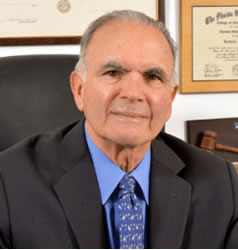Q.Progress has been made on improving patient safety and reducing clinical mistakes, but errors happen and, in spite of everything, patients are still harmed. When an error has occurred and a malpractice case is filed, what should be done to maintain the organization's integrity and ensure patients and their families are treated fairly? What values should influence the process?
A.One of my previous columns ("Responding to Clinical Mistakes,"Healthcare Executive, September/October 2006) described the need for a comprehensive policy that is consistently applied when a mistake happens. The column also discussed the importance of making a timely disclosure, expressing a sincere apology, explaining steps taken to prevent similar errors and, when appropriate, indicating an interest in providing proper compensation.
Although studies have reported that the incidence of litigation has been reduced when this approach is taken, individual and institutional healthcare providers will certainly continue to be defendants in malpractice cases. Regrettably, by its very nature, litigation creates an adversarial relationship between the parties. In an eloquent presentation at the National Patient Safety Foundation's 2007 Patient Safety Congress, Susan Sheridan shared her personal experiences following an error that caused permanent brain damage to her newborn son and later the death of her husband due to a failure to communicate malignant spinal cancer pathology.
Mrs. Sheridan's riveting remarks resonated with me for two reasons. First, as a former hospital CEO, I remember a few occasions when
our legal counsel asked for my approval to settle a malpractice case in which the hospital had been named, along with physicians, as a co-defendant.
After an extensive analysis, sometimes we determined hospital employees were not responsible for the bad outcome, but counsel recommended settlement to avoid adverse publicity and the remote possibility of a higher payment if the case went to trial. In evaluating our legal counsel's recommendation, I thought principally about my administrative and ethical obligations to the organization without devoting much time to my ethical responsibilities to the patient and/or the patient's family.
Second, for a number of years, I have served as an expert witness for both defense and plaintiff attorneys. Consequently, I have reviewed scores of depositions, given my own deposition and testified in court. This experience has given me a deeper appreciation for the nature and politics of malpractice cases. Even more important, it has provided greater insight into why patients and their families pursue litigation and what happens to them when they do.
Mrs. Sheridan's presentation was included in the July/August 2007 issue of Patient Safety & Quality Healthcare. The article, "We're Not Your Enemy," was co-authored with Martin Hatlie, JD, president of Partnership for Patient Safety. It should be required reading for every healthcare executive. In the article, the authors noted that medical-legal research has found that the existing tort system undercompensates the majority of patients and families who have suffered medical error. Assuming the validity of this finding, what are some of the noneconomic costs that cannot be quantified?
Despite impressions to the contrary, it is anger not greed that drives most malpractice lawsuits. Among other factors, this anger is usually driven by denials that a mistake occurred, the lack of timely disclosure and apology, a refusal to meet with a patient, family members or both to discuss an error, the unwillingness of the hospital, physicians and perhaps others responsible for the mistake to cooperate in providing a fair settlement, and a general sense that the organization was insensitive to the patient or family's needs.
So what can happen as the result of subsequent litigation? In Mrs. Sheridan's case, it seemed like a never-ending nightmare. She said:
"We learned with great alarm and extreme disappointment that litigation is a 'win-at-all-costs blame game' that it is wildly inconsistent and deviously strategic and which rarely makes our healthcare system safer. We learned that expert testimony could be bought, that medical records could disappear, and that patients and family members were often pressured to keep quiet in the settlement process. We witnessed a culture of collusion and cover up."
Lessons for Healthcare Organizations
Let us suppose a hospital does everything possible to prevent clinical errors and works conscientiously with patients and family members to reach an amicable settlement when a mistake has been made. Despite these efforts, a malpractice suit has been filed. How should the organization respond?
Typically, the institution's insurance carrier retains a law firm to defend the case and, unless it is accompanied by extensive publicity, the hospital CEO's personal involvement may be quite minimal. Mrs. Sheridan's poignant story suggests her situation was not unique, and my own experience confirms that senior management frequently has little or no participation in any aspect of the defense process.
Risk managers, insurance carriers and outside counsel are motivated to win each case and minimize every settlement. Strategically, these are their objectives, and implicitly they are management's expectations as well. The legal and financial value of this strategy is obvious, but is it consistent with an organization's ethical values.
Most hospital value statements are created to capture and convey the institution's ethical principles and commitments and usually highlight the importance of excellence, respect, integrity, dignity, compassion, stewardship, justice and similar virtues. If healthcare organizations are genuinely dedicated to fulfilling these virtues they must be consistently reflected in the way malpractice cases are handled. For many hospitals, this will require re-examining who is overseeing cases and what ethical template is used to assess how they are being managed.
The direct involvement of the CEO in all malpractice cases may have a valuable benefit. Engaging the CEO could possibly temper some of the inevitable adversarial dimensions of litigation and contribute to more timely and reasonable settlements.
At least annually, hospital CEOs should be giving a report to the board on malpractice cases and their outcomes. In making and discussing this report, they should consider Mrs. Sheridan's closing remarks: "Remember that people who experience medical errors are not just dollar figures. We are your loved ones. We are you."











